Beetroot are beet plants that are closely related to the Swiss chard. There are important tips here to help you grow red beets successfully in the garden.

Beetroot (Beta vulgaris subsp. vulgaris var. conditiva) belong, just like the Swiss chard (Beta vulgaris subsp. vulgaris) and the spinach (Spinacia oleracea), to the goosefoot family (Chenopodiaceae).
Originally, beetroot was found on the shores of the Mediterranean Sea. Nowadays, however, it has become indigenous to all of Central Europe. It is a robust, versatile vegetable that is hardly attacked by pests. The tuber can be harvested in the first year. The beetroot does not develop its seeds until the second year. The size of the tuber ranges from glass marble to tennis ball size. Their shape varies from spherical to cylindrical. With the old ones Beetroot varieties the tuber is colored red and you can even see this color in the leaves. What many do not know: the leaves can also be used in the kitchen. You make them a bit like spinach. The colors of the newer beetroot varieties range from orange to yellow to white or red and white ringed.
contents
-
Growing beetroot: seeds and choice of location
- Beetroot: the right location
-
Sow and prick beetroot: Instructions
- 1. Sowing beetroot: the procedure
- 2. Sowing: the right time
- 3. Prefer beetroot
- 4. Beetroot: Separate and prick out
- Beetroot: the different varieties
- Caring for beetroot properly: water and fertilize
- Harvesting beetroot: when and how to do it
- Store beetroot properly
- Preserve beetroot
- Beetroot or beetroot?
Beetroot require little care and are therefore also suitable for newcomers to the vegetable and vegetable sector Raised bed cultivation. The tuber contains a lot of iron and folic acid and is also rich in vitamin B.
Growing beetroot: seeds and choice of location
If you want to grow beetroot yourself, you have to find a suitable location in addition to the selection of the seeds.
Beetroot: the right location
The beetroot plants are quite frugal. They like a sunny spot, but do just as well in partial shade. The garden soil should be improved with a light, permeable layer of humus. Even moisture is very important throughout growth.
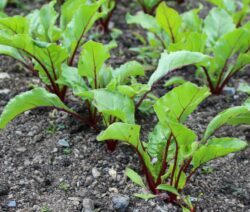
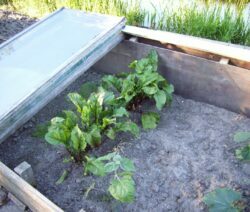

If you want to choose a “good neighbor” for beetroot in the vegetable patch, then you should go for Onions, Beans, Cucumber or choose cabbage vegetables. potatoes on the other hand, are less suitable, as they spread very widely in the soil and quickly remove nutrients from the soil.
The dear relatives Swiss chard and spinach shouldn't be planted in the neighboring bed either. They do not get along very well and are refuge for host-specific diseases.
Sow and prick beetroot: Instructions
1. Sowing beetroot: the procedure
Once you have decided on a variety and a location, you can start sowing. So that the relatively hard beetroot seeds germinate faster, they can be soaked in water for a few hours before sowing. In the open they are then approx. Set 2 to 3 cm deep in the earth. A distance of 10 cm should be observed in the row. There can be a good 25 cm between the individual rows. The germination time is 12 to 14 days.

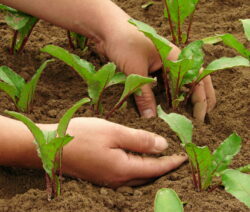
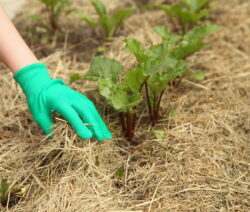
2. Sowing: the right time
You can sow the seeds as early as mid / late April. Plants that got frost very early have an extreme tendency to shoot (generative growth instead of tuber formation). It is therefore advisable to protect the beets with straw or fleece during late spring frosts. If you want to be on the safe side, you will only sow in June.
3. Prefer beetroot
But you can also prefer the beetroot in the planter and put it in the open air bed in June. This avoids the risk of frost and until then has the bed area in the garden available for other types of vegetables.

4. Beetroot: Separate and prick out
So that the seedlings do not hinder each other's growth or even die, they have to be pricked out in good time. Prick out means that you transplant seedlings that are too close together. They are isolated by carefully removing them and replanting them at greater intervals.
For this you can also use a pricking stick, which carefully lever the plant out of the earth. It is essential to ensure that the roots, which are still fine, are not damaged. With sufficient distance to the next plant, the seedling is now put back into a prepared hole in the earth. Then it is carefully but well watered with a watering can with a hairspray. If you prick the plants carefully, they have a good chance of continuing to thrive.
Beetroot: the different varieties
Below we introduce five popular ones Beetroot varieties before. You can find a much larger selection here.
- Red ball: a well-tried variety with a typical round ball (red variety)
- Early Wonder Tall Top: this early variety is characterized by its particularly delicate leaves (red variety)
- Egyptian flat round: very old variety; flat round; fast growing (red variety)
- Boldor: yellow pulp; Much sweeter than the red-fleshed varieties, but mild in taste (yellow / orange variety)
- Tonda di Chioggia: vigorous; red and white pulp (red and white or light variety)
The red varieties of beetroot are usually more earthy in taste than the lighter varieties. However, they are ideal for further processing as raw vegetables or for cooking, roasting and canning. If you don't want the beetroot to color all the other ingredients with their intense juice during processing, it is better to choose a lighter variety. Information on Yellow beetroot can be found in this article, by the way.
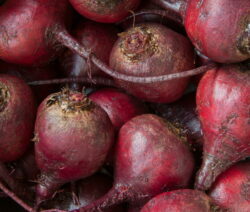
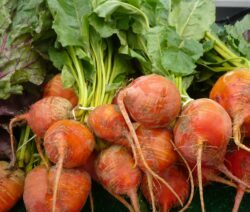
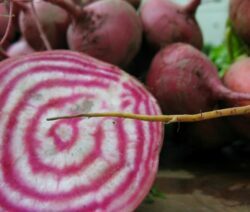
Caring for beetroot properly: water and fertilize
It is very important that the beetroot is constantly watered so that the deeper roots get water as well. This can be necessary every day in the hot season. Waterlogging should be avoided, however, so that the roots are not covered with a putrefactive disease and can then no longer feed the plant.

Fertilizing the beetroot is not absolutely necessary. If the sowing soil is rich in nutrients, that is completely sufficient. If the soil is not so rich in nutrients, then you usually need a one-time fertilization. Green manure is recommended here. This should ideally be done in the autumn, so planning in good time is important. However, you should avoid using nitrogenous fertilizers because of the high nitrate content. If you want to do a little more for the plants, you can use an organic vegetable fertilizer, such as our potassium-based fertilizer Plantura organic tomato fertilizer, use. Careful loosening or chopping up of the soil also promotes tuber growth.
Harvesting beetroot: when and how to do it
Beetroot can be harvested three to four months after sowing. One has to be careful when harvesting. The fruit must not be damaged, otherwise it will quickly rot. The leaves are carefully twisted off. In your own garden you should harvest gradually, as you need the vegetables. Before the first frost, however, all tubers should be harvested. If you want to enjoy small, tender beets, you can eat them before the first three months are up.
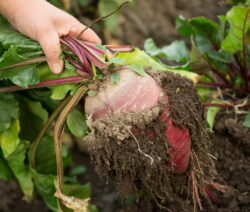
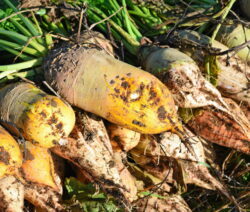
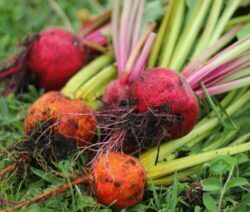
Store beetroot properly
Proper storage of beetroot is very important. An ideal storage location is a cool, not too dry cellar. They can also be overwintered in a wooden box in damp sand or damp earth.
More about the right one Beetroot harvest and storage You will find here.
Preserve beetroot
Beetroot is one of the healthiest vegetables and should not be missing in any garden or kitchen. It is therefore advisable to always have a diverse supply of healthy tubers in the house. We give tips on how you can benefit from this supply for a long time.

- With a very large harvest:
Temporary storage in the dark cellar in damp earth or damp sand
-
Freezing beetroot:
- Steaming
- Peel
- roll the dice
- Let cool down
- Freeze
- Pickling beetroot:
Stew, peel and dice (like freezing); then pickle with vinegar, oil and spices
-
Boil beetroot:
- Steam, peel, dice
- Put on the brew to boil down
- Portion the cubes (in preserving jars); Pour stock into glasses
- Close the jars and let them rest for approx. Boil for 45 minutes
Beetroot or beetroot?
Everyone knows the red-fleshed root vegetables, after all, beetroot is a classic in the home kitchen. But as well-known as it is, the question arises again and again, how do you actually spell it correctly: "Beetroot" or "Beetroot"?
After the spelling reform, only the “red” was changed to “red” and both forms of “beetroot” are still valid. "Bete" is derived from the Latin "beta" for "turnip" and "Beet" can be associated with the bed in the garden and the particular suitability of the red beet for edging beetroot.
Did you know that there can be great benefits in planting different plants side by side? In this article you will find all the information you need to be successful Mixed culture require.


